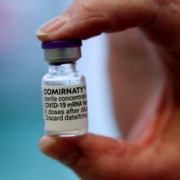Removing barriers: Improving diversity in clinical trials
Removing barriers: Improving diversity in clinical trials
By Rachael Scott
The clinical trials industry continues to face an acute diversity challenge. Recent analysis of FDA drug approvals between 2014 and 2021 found that fewer than 20% of drugs had data relating to side effects or treatment benefits for Black patients.[1] In addition, a National Academies report published earlier this year indicated that progress in clinical research is not being made for people in other underrepresented racial and ethnic populations.[2] Women, older adults, LGBTQIA+ community members, and individuals with disabilities are all underrepresented in clinical studies.
We cannot underestimate the negative impact – not only on individual lives but also on wider society – of these participant populations not being proportionately represented in clinical trials. According to a congressionally mandated report from the National Academies, a lack of equitable representation in clinical trials is projected to cost the U.S. hundreds of billions of dollars over the next 30 years.[3] The president of the National Academy of Medicine, Victor J. Dzau, put the affected communities at the heart of the issue when he said that “the populations left out of research bear the greatest cost, as they may lose out on benefiting from the United States’ substantial investment in scientific advancement and may be deprived of access to novel treatments.”
This is a challenge that the global clinical research enterprise must continue rising to every day, to build on the advancements that have already been made to revolutionize how clinical trials are designed and managed. One recent example is that of multiple pharmaceutical firms making efforts to increase diversity for their COVID-19 vaccine trials, including in some cases slowing down recruitment, or setting up new sites in different countries, to improve representation.[4]
Making the design of clinical trials more flexible and efficient has the potential to increase access and diversity in clinical trials. New approaches using virtual tools, including apps for participants and clinicians, are providing participants choices around their participation, which is key for reaching historically underserved people.
Technology is enabling progress, but it is people – the participants and clinical research staff – who are the driving force of this transformation.
In recent years, public commitments to increase recruitment from underrepresented groups point towards the progress that can be achieved. Ever closer collaboration within the clinical research enterprise can enhance the experience in trials and increase the potential for future medical innovations based on a foundation of democratic and diverse clinical studies. Without participants who accurately mirror the global population, it is impossible to develop medications, treatments, and therapies that benefit everyone.
Reaching underserved groups
Industry studies have emphasized the need for greater representation amongst participants in clinical trials and the professionals conducting the studies.
CISCRP (Center for Information and Study on Clinical Research Participation) recently found that 49% of respondents said they would have more trust in pharmaceutical companies if they knew that the organization included a diverse set of participants in their clinical trials.[5] CISCRP has found that Black respondents (39%) were more likely to say it was ‘very important’ to have diverse staff versus White (25%) or Asian (27%) respondents.[6]
A separate study using data from the Wellcome Trust Monitor investigated differences in engagement with medical research between White British and minority ethnic groups in the United Kingdom. It was found that only around 5% of respondents from minority ethnic groups in the UK had ever participated in medical research.[7]
Making clinical trials equitable relies upon reaching communities that may have a generalized mistrust of doctors and healthcare. Trust in medical science has declined in recent decades, leading to more challenging doctor-patient relationships, less patient compliance, and ultimately unrepresentative outcomes.[8]
Collaboration across the healthcare industry can help change this. It calls for continuous community engagement and empathy on the part of clinical research professionals at all levels, in all roles, to strengthen trust in medical systems. Demonstrating a commitment to transparency about clinical research goals and outcomes is an essential part of this work.
Our colleagues talk about meeting participants “where they are”, and this needs to be achieved on several levels. Meeting participants on an emotional level requires a people-first approach grounded in knowledge and empathy. It has, for example, been found that a majority (62%) of transgender people have had the experience of healthcare visits wherein medical professionals have not understood specific trans health needs. More than a third (37%) of transgender people and 33% of non-binary people have stated that they avoid medical treatment for fear of discrimination.[9] Developing study and care teams that are informed and trained to a high standard, where they understand the differing health needs of the LGBTQIA+ community, will help to increase the connection in reaching underserved populations.
Ever greater levels of commitment and creativity are needed when planning for community engagement to meet participants in their neighborhoods. Engaging with communities through a grassroots approach builds personal relationships, scales trust, and provides an opportunity to share information and awareness about the importance of participation in clinical research.
Designing studies that prioritize the people involved at every step – and provide choices for participants – is integral to making clinical trials more diverse.
Implementing new clinical trial models that have a strategically creative and compassionate approach to clinical research as a healthcare option will reinforce that more inclusive clinical research starts with the human connection, and that connection needs to be evident in everything we do.
Reducing burdens to improve diversity
During the pandemic, we saw that clinical trials could be deployed more efficiently than ever before, while also being safe and meeting all regulations. For example, increasing home visits for clinical trial appointments alongside the introduction of “the third place” has the potential to further close the gap of inequity in clinical research and maximize outcomes for participants and sponsors. Sociologist Ray Oldenburg said the “the third place” is the social surrounding that is distinct from the two main social environments of home (the “first place”) and work (the “second place”).[10]
Providing people with the choice of participating in clinicals trials at a “third place” ensures that they are not limited by where they live or, in some cases, not being comfortable having someone visit them at home. One innovative example of this is mobile research units (MRUs), which are fully functional clinical study facilities. MRUs are an additional location for a study as an extension of other community-centered brick and mortar locations. MRUs are a “third place” where we can bring people and technology together in a clinical trial, effectively and conveniently, and increase the participant’s comfort in the process.
MRUs are equipped to allow for the participation in, and the running of, many types of clinical trials. They remove the burden of travel to and from a doctor’s office or research site for participants and their care partners. A study conducted in November 2021 found that 79% of US respondents and 85% in the UK would be more likely to take part in a clinical trial in the future if visits were to be conducted at home or in an MRU.[11]
The virtual-first model can deliver additional oversight and care that enables clinical research organizations to provide a consistently high level of experience. Flexible approaches, particularly those that incorporate a third place, have the potential to increase access to clinical trials in emerging markets with limited infrastructure.
These new approaches are helping to bring clinical trials to all, particularly the most vulnerable populations. They can provide participants and their loved ones with a greater sense of support, understanding and confidence about participating in a clinical study. Removing geographic and logistical burdens scales access which in turn drives equity.
We are proud to be working with our peers in the clinical research enterprise and the Digital Medicine Society (DiMe) to improve inclusion through new clinical trial models and strongly believe in the significant contribution that people-first, collaborative approaches can make towards improving health equity.
References
[1] Angela K Green, Niti Trivedi, Jennifer J Hsu, Nancy L Yu, Peter B Bach, Susan Chimonas, March 2022.
‘Despite The FDA’s Five-Year Plan, Black Patients Remain Inadequately Represented in Clinical Trials for Drugs’ https://pubmed.ncbi.nlm.nih.gov/35254926/
[2] National Academies of Sciences, Engineering, and Medicine, May 2022. ‘Improving Representation in Clinical Trials and Research: Building Research Equity for Women and Underrepresented Groups’ https://nap.nationalacademies.org/catalog/26479/improving-representation-in-clinical-trials-and-research-building-research-equity
[3] National Academies of Sciences, Engineering, and Medicine, May 2022. https://www.nationalacademies.org/news/2022/05/lack-of-equitable-representation-in-clinical-trials-compounds-disparities-in-health-and-will-cost-u-s-hundreds-of-billions-of-dollars-urgent-actions-needed-by-nih-fda-others-to-boost-representation
[4] CNBC.com, September 2020. https://www.cnbc.com/2020/09/04/moderna-slows-coronavirus-vaccine-trial-t-to-ensure-minority-representation-ceo-says.html
[5] CISCRP, July 2021. ‘Perceptions and Insight Study 2021: General Perceptions’ ciscrp.org/wp-content/uploads/2021/11/2021-PI-General-Perceptions-Report-04NOV2021-FINAL.pdf
[6] CISCRP, July 2021. ‘Perceptions and Insight Study 2021: Deciding to Participate’ https://www.ciscrp.org/wp-content/uploads/2021/11/2021-PI-Deciding-to-Participate-Report-04NOV2021-FINAL.pdf
[7] Andrew Smart and Eric Harrison, February 2017. ‘The under-representation of minority ethnic groups in UK medical research’ https://pubmed.ncbi.nlm.nih.gov/27174778/
[8] SCP Health, February 2020. ‘Impactful Strategies Hospitals Can Use to Improve Community Health and Win Back Patient Trust’ https://www.scp-health.com/blog/impactful-strategies-hospitals-can-use-to-improve-community-health-and-win-back-patient-trust/
[9] LGBT in Britain; Health Report. Stonewall, 2018 and 2015 US Transgender Survey
[10] Ray Oldenburg, The Great Good Place, 1989
[11] Lightship’s research conducted in November 2021, with 1,378 people from both the US and UK completing the Decentralized Clinical Trial Market Research survey, carried out by Dynata.
 |
Rachael Scott serves as chief commercial officer at Lightship. She leads customer design solutions, business development and strategic marketing. Rachael excels at the intersection of strategy and operations to develop robust commercial structures designed for successful and streamlined collaboration with sponsors. Rachael’s expertise includes leading business development initiatives and integrated marketing platforms while building departments to scale. Prior to joining Lightship, Rachael served as a partner at PA Consulting Group and a director at Ernst & Young. Rachael delivered results working with pharmaceutical and biotech organizations to deliver operational fitness and market expansion strategies. After launching her career at AstraZeneca, she spent a decade at IMS Health managing key global clients. |











